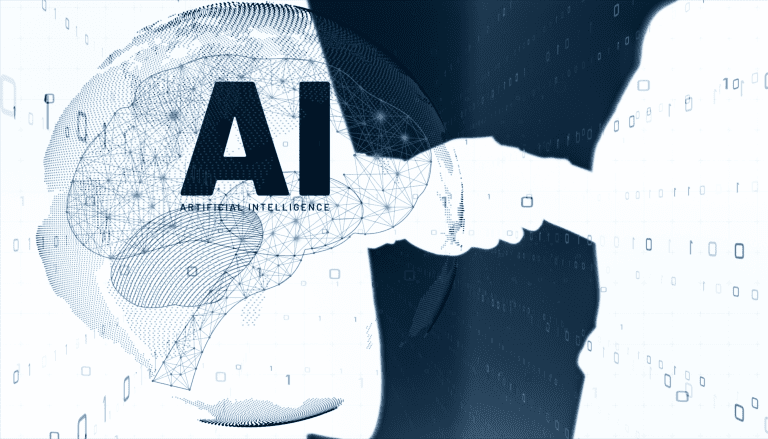Recruiting qualified individuals for technology companies usually kicks off with a talent hunt.
Companies post job ads on platforms like LinkedIn or use employee referrals to pull in prospects. Then HR is hit by a resume avalanche, and the staff have to sift through it with a fine-tooth comb, looking for those needle-in-a-haystack candidates who have the right skills and vibes.
After that comes the whole interview saga, which could include a mix of technical assessments as well as challenging questions. The whole recruitment process—finding the right candidates for the roles on offer—takes a lot of time and effort. However, generative AI tools are in the process of changing that.
As a company owner in the technical sector, you will undoubtedly want to keep up with the latest technological advancements. That includes using generative AI for recruitment. So, let’s take a look at some of the key ways in which your recruitment must change in this new era of artificial intelligence.
You Must Utilise Automated Resume Screening to Find the Right Candidates
As you may know, generative AI can be used for multiple purposes, from making an AI created image to writing a circular memo. When it comes to recruitment, there are several AI tools that technical companies can no longer afford to be without.
Automated Resume Screening is one of those tools. It’s like having a super-charged Ctrl+F for talent. The tool dives into the ocean of resumes and scours for specific keywords, skills, or educational backgrounds using clever algorithms. The heavy lifting? That’s done in microseconds compared to the hours (or days!) it takes a human.
For tech recruiters, embracing this is a game-changer because they’re drowning in applications every time they post a job. By automating the slog of initial resume review, companies ensure only the most relevant applicants move forward – which means saying goodbye to manual drudgery and hello to focusing on what really matters: finding a candidate who actually knows their stuff.
You Must Embrace AI-Enhanced Job Matching So That You Can Find the Ideal Employees
AI-Enhanced Job Matching is like the ultimate dating app but for jobs. It uses machine learning algorithms to analyse a candidate’s skills, experience, and even their subtle nuances – like how they work with others. Then, in true matchmaker style, it pairs them with job roles that will fit them like their favourite hoodie.
Now, in one word, here’s why tech companies have got to get on board with this: efficiency. In an industry where the right coding language fluency can be as crucial as fitting into the team culture, you don’t want to throw spaghetti at the wall, hoping something sticks.
This AI magic ensures each position gets matched with not just any candidate but the one most likely to excel in that role without burning tons of HR hours.
You Must Use Virtual Recruitment Assistants to Help with Multiple Hiring Tasks
Virtual Recruitment Assistants are like your Alexa for hiring. These digitally savvy pals can contact candidates, schedule interviews, and tackle FAQs without breaking a sweat. They’re AI-powered, running on natural language processing to communicate with human-like charm.
For tech sector firms aiming to stay lean and mean, VRAs are non-negotiable. Hands down, they transform the candidate experience by providing instant responses 24/7 – everyone’s getting information at the speed of light.
They take repetitive tasks off recruiters’ plates so those folks can focus on strategy and the human touch where it counts.
You Must Use AI-driven Skill Assessment Tests for Next-Level Vetting
Check it: AI-driven Skill Assessment Tests are the next level in vetting what’s under the hood of your candidates. These aren’t your grandma’s multiple-choice quizzes. We’re talking about sophisticated tests that adapt questions in real-time, based on how applicants are performing.
For any tech company worth its salt, these tests are gold. We all know tech skills evolve faster than a viral meme, so having an assessment tool that learns and evolves is crucial. For instance, you can verify if a coder really knows their algorithms or just talks a big game.
It sorts the true wizards from the apprentices — which is vital when you need folks who can sling code or manage systems like experts on day one.
You Must Make Use of Bias-Minimising Algorithms to Ensure Fair Hiring
Bias-minimising algorithms are basically the referees in the hiring game, ensuring play is fair. They’re specially designed to sort through candidate data and flag potential unconscious bias – you know, like favouring a certain university or having a soft spot for names that roll off the tongue easier.
Tech companies have got to keep these algorithms in their toolkits because bias is bad for business. It’s not just about doing the right thing (which should be enough). Diverse teams are where it’s at—they innovate better and crush problems faster. And let’s face it, tech thrives on innovation.
By leveraging these algorithms, you’re more likely to assemble an Avengers-level team of diverse thinkers who can tackle any coding challenges or system snags thrown their way.
Guest Writer


























